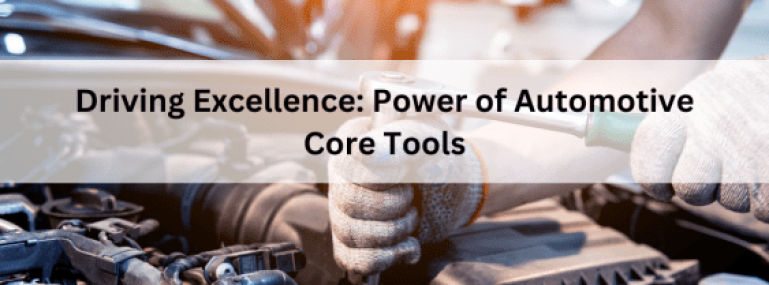Among the Automotive Core Tools, there are methodologies that assist manufacturers and suppliers in adhering to IATF 16949, the standard for quality management systems in the automotive industry set by the International Automotive Task Force.
The Automotive Core Tools encompass:
- Advanced Product Quality Planning & Control Plan (APQP): APQP guides the development of new or improved products and processes, ensuring they align with customer expectations.
- Production Part Approval Process (PPAP): This process aims to confirm a supplier’s ability to manufacture parts that meet specified customer requirements and quality standards.
- Failure Mode and Effects Analysis (FMEA): This tool identifies and assesses potential failures, providing recommendations to prevent or mitigate them. A recently harmonized FMEA manual combines the best practices of AIAG and VDA, two industry associations.
- Statistical Process Control (SPC): Utilizing statistical methods and charts, SPC monitors and manages the variation of critical process parameters.
- Measurement System Analysis (MSA): MSA evaluates the accuracy and precision of measurement systems, pinpointing sources of measurement errors and variability.
The following outlines the advantages and disadvantages of automotive core tools:
The advantages are:
- Ensuring quality, reliability, safety, and customer satisfaction within the automotive sector.
- Reducing costs, waste, defects, and risks.
- Facilitating conformity with IATF 16949, the international quality management standard in the automotive industry.
- Demonstrating competence and compliance with customer and regulatory prerequisites.
- Enhancing manufacturing efficiency, labor productivity, and materials management.
The disadvantages are:
- Effective implementation necessitates substantial training, certification, and software usage.
- May not readily accommodate changes in market trends, customer needs, or product innovations.
- Compatibility concerns with other quality tools and techniques used in different industries or sectors.
- Possible inadequacy in addressing all quality challenges within the automotive industry.
Automotive Core Tools serve various purposes:
- The APQP process guarantees adherence to requirements and the avoidance of potential issues throughout product development, from concept to launch.
- PPAP ensures suppliers can deliver parts in line with design specifications, quality standards, and customer demands.
- FMEA identifies and prioritizes potential failure causes and effects, subsequently implementing corrective or preventive actions.
- Statistical Process Control aids in identifying and eliminating sources of process variation, whether common or specific, through measurement and analysis.
- MSA improves measurement system accuracy, reliability, and consistency while minimizing measurement errors and variations.
ComplianceXL employs these Automotive Core Tools to provide clients with services concerning diverse regulations, contributing to the automotive industry’s quality, reliability, safety, and customer satisfaction. This approach offers customers a risk-free, cost-effective solution, enabling the automotive sector to uphold regulatory compliance and competitive strength.





